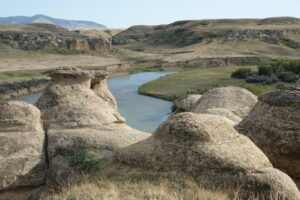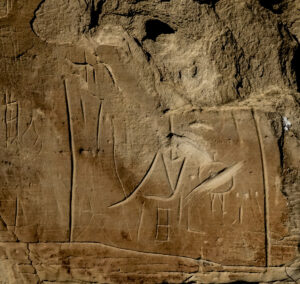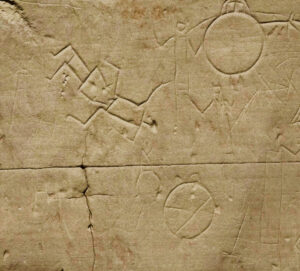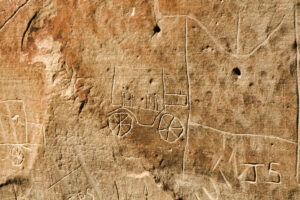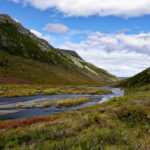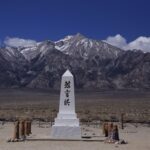Writing-on-Stone
We were drawn here by the hoodoos and rock art. However, even though I knew what we would be seeing, I did not fully understand why it is called Writing-on-Stone. Here, the earth rose, fractured, and eroded into hoodoos, stone sentinels shaped by wind, water, and time. Around 5,000 years ago, the Blackfoot (Siksikaitsitapi) began to leave inscriptions at Nitawahsin — the original land. Some of the art was ceremonial, what was learned through vision quest and the traditions of the People. Some of it is historical, such as a complex battle scene or a depiction of an early automobile. It is the experience of the nation. The writing is more than words, more than image. Itis the writing of spirit on stone.
My Log
We knew that Writing-on-Stone would be special. Two of my favorite things are rock art and hoodoos come together here. As soon as we learned about this site, we knew that we would have to visit.
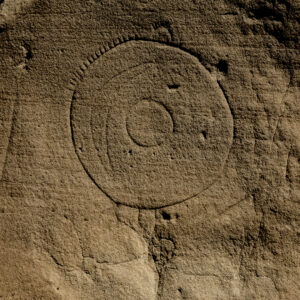 It took surprisingly long to cross the border. I was not sure why since the agents did not look for contraband. We were older, and pulling a 13 foot tent trailer. We were directed to park and I took the easiest area, which turned out to be a space they used for searches. I was told not to park there.
It took surprisingly long to cross the border. I was not sure why since the agents did not look for contraband. We were older, and pulling a 13 foot tent trailer. We were directed to park and I took the easiest area, which turned out to be a space they used for searches. I was told not to park there.
I might look a little suspicious since my hair is longer than some, but my wife is beyond reproach. I wondered as we waited for the officer to run our passports through their system. Then he got down to the essential question: Why are you here? Maybe it is best explained in reverse. Why would anyone not want to go to a UNESCO site? I said that the park is called Writing-on-Stone and rock art is one of my main interests.
The officer pressed further. Why do you want to see petroglyphs? Since the long answer to that could could have taken hours, I kept it simple: they are a link to the past, a path to cultural understanding. Maybe he was just curious on a slow day, but my answer satisfied him.
It was probably good that I did not bring up earthcaching and have to explain that. He finally stamped our passports and we made it here.
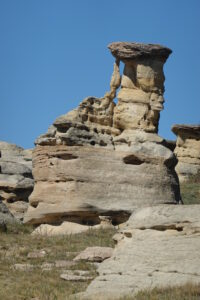 We started our time by going straight to the hoodoos and the river. The formations are an ethereal, immersive experience. Some might call them badlands, which is a misnomer. On one hand they can be described in geological terms, how calcium carbonate eroded the rocks and the ever changing landscape is what remains. On the other hand, the story here is deeper. The area reached into the bones of the earth. It is Niitsítapi, the heart of the Blackfoot nation.
We started our time by going straight to the hoodoos and the river. The formations are an ethereal, immersive experience. Some might call them badlands, which is a misnomer. On one hand they can be described in geological terms, how calcium carbonate eroded the rocks and the ever changing landscape is what remains. On the other hand, the story here is deeper. The area reached into the bones of the earth. It is Niitsítapi, the heart of the Blackfoot nation.
We were lucky to be on a rock art tour led by a Blackfoot elder, who was otherwise here with university students. He took us on more than a tour — a journey into tradition, culture, the life of the People, and ultimately spirit.
I learned that the writing on stone could not be done by just anyone. You had to have a calling. I look at the writing from the outside, its meaning is beyond me, and is not mine to claim. But to be called is to know the connection between the people, the land, and spirit. The rocks here speak for themselves. To know what is said is the sacred trust of the Blackfoot people. But perhaps the rest of us can just look in a way that respects what the rocks have to say.
Even as an outsider, the rocks have a profound impact. To see the writing on stone is to be introduced to the mystery. The question asked by the officer is self evident. Why am I here? I am here to look and to listen.
(September 2019.)
